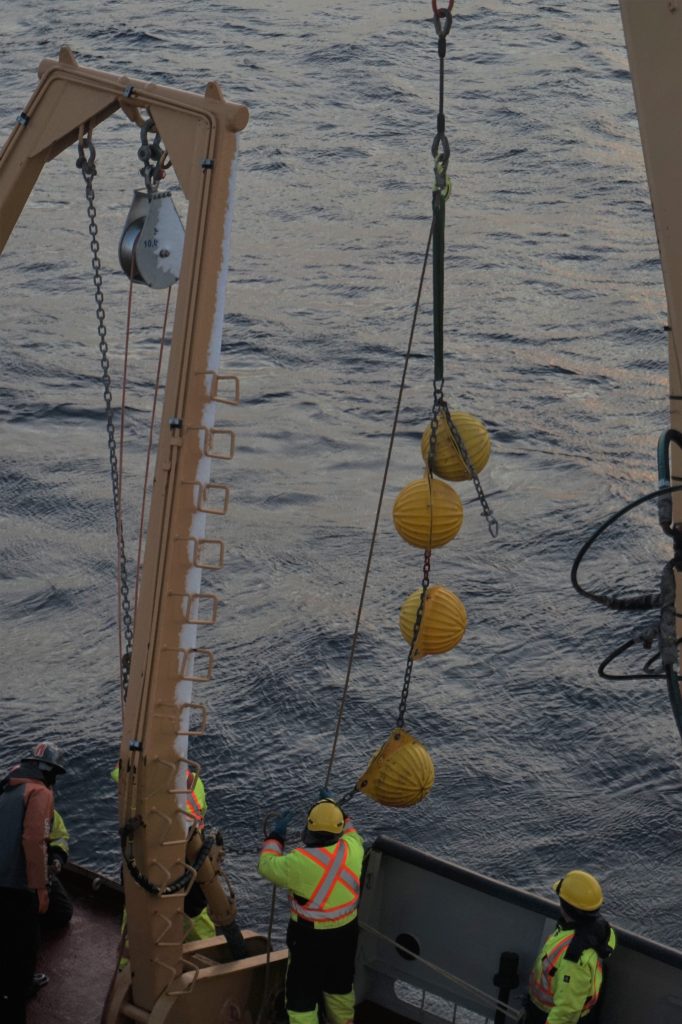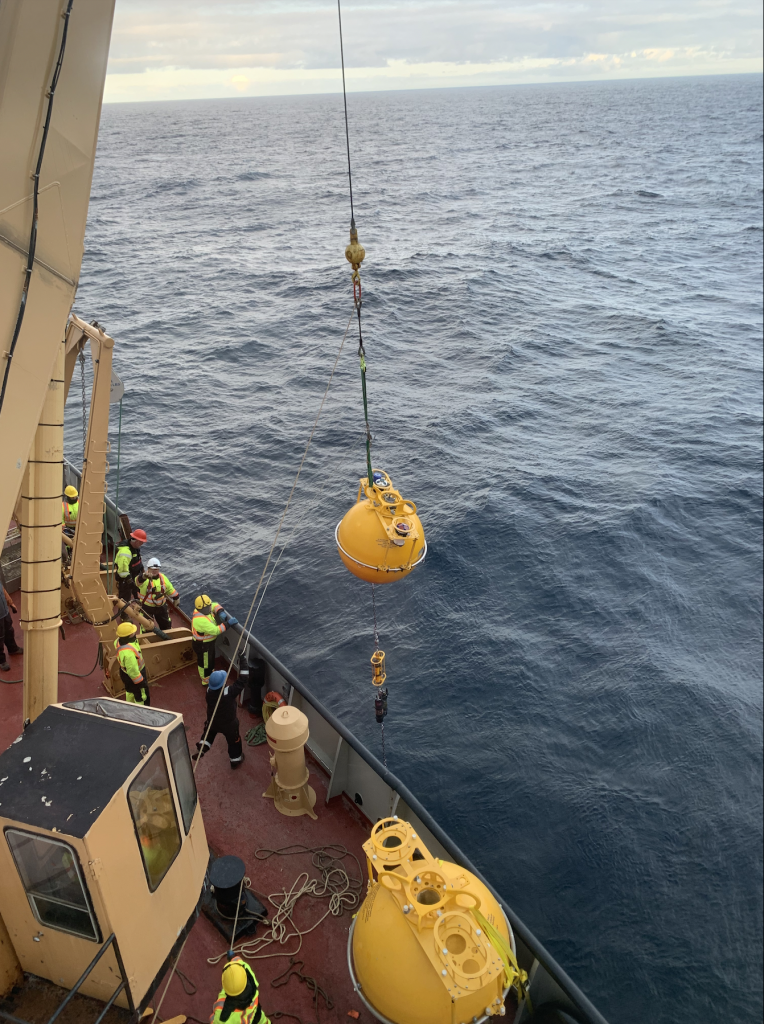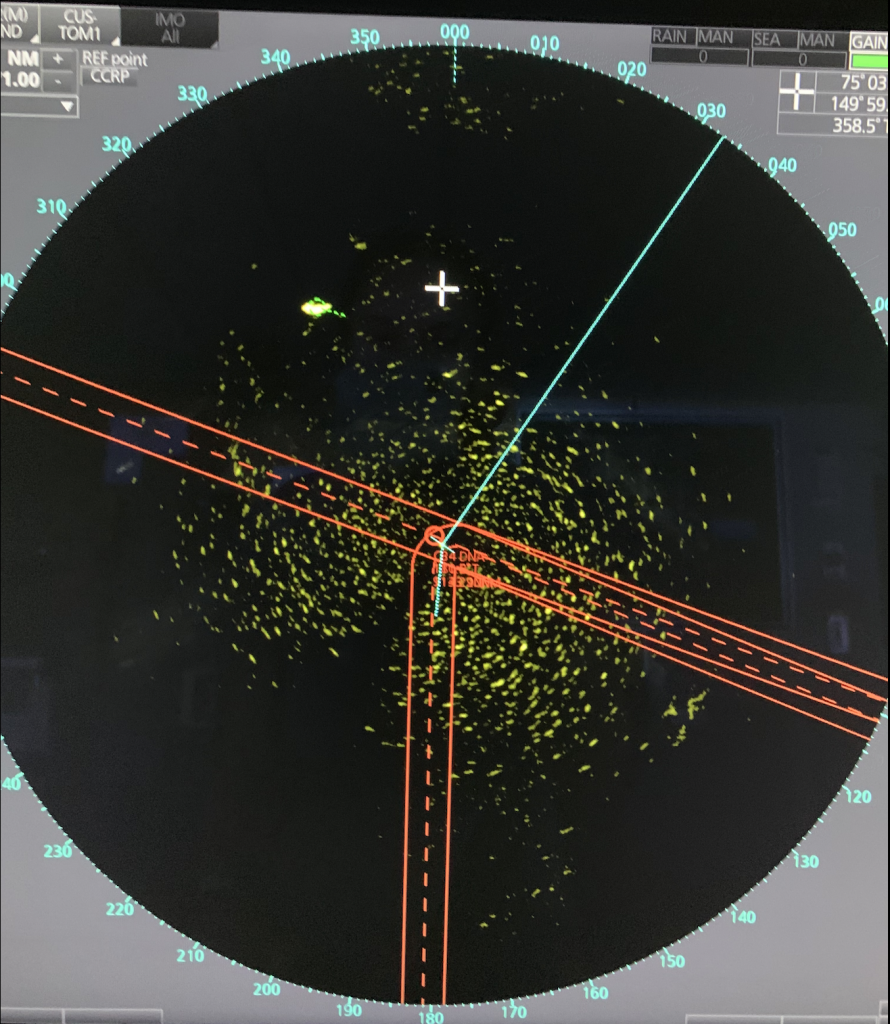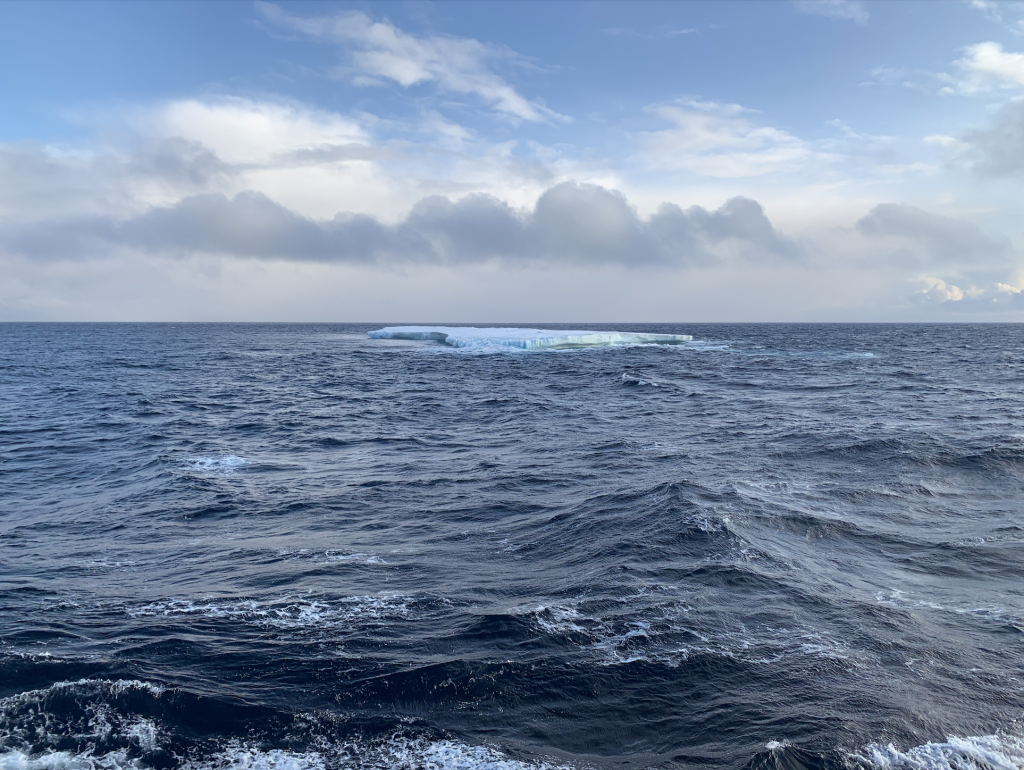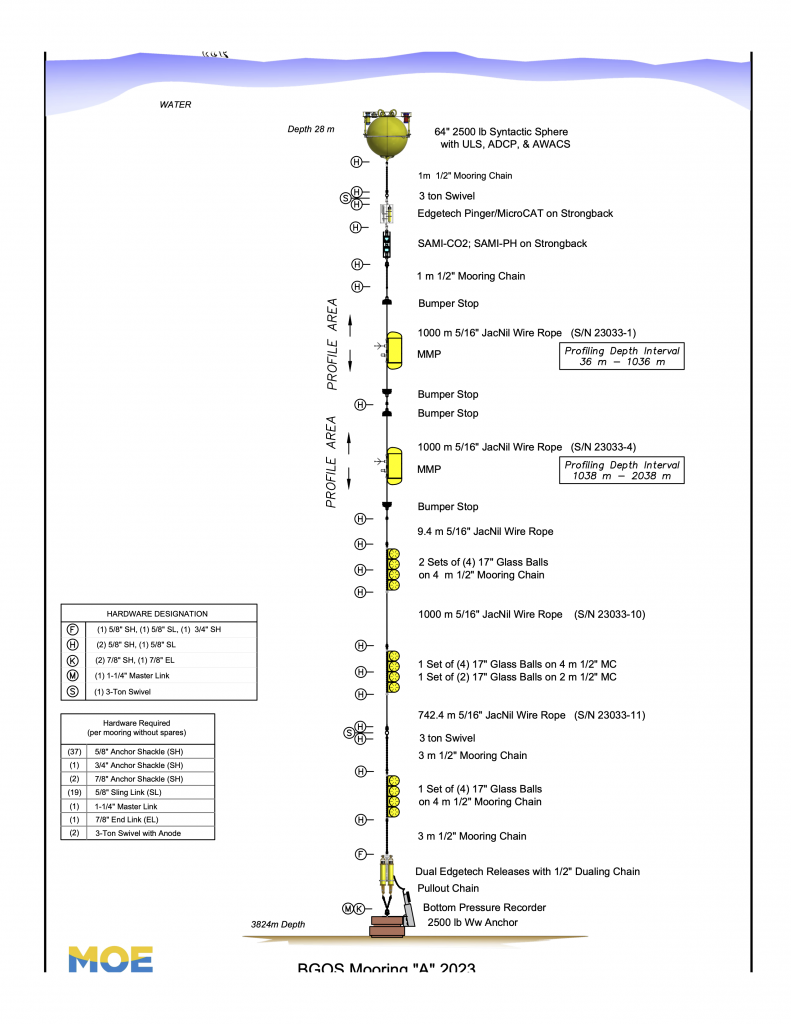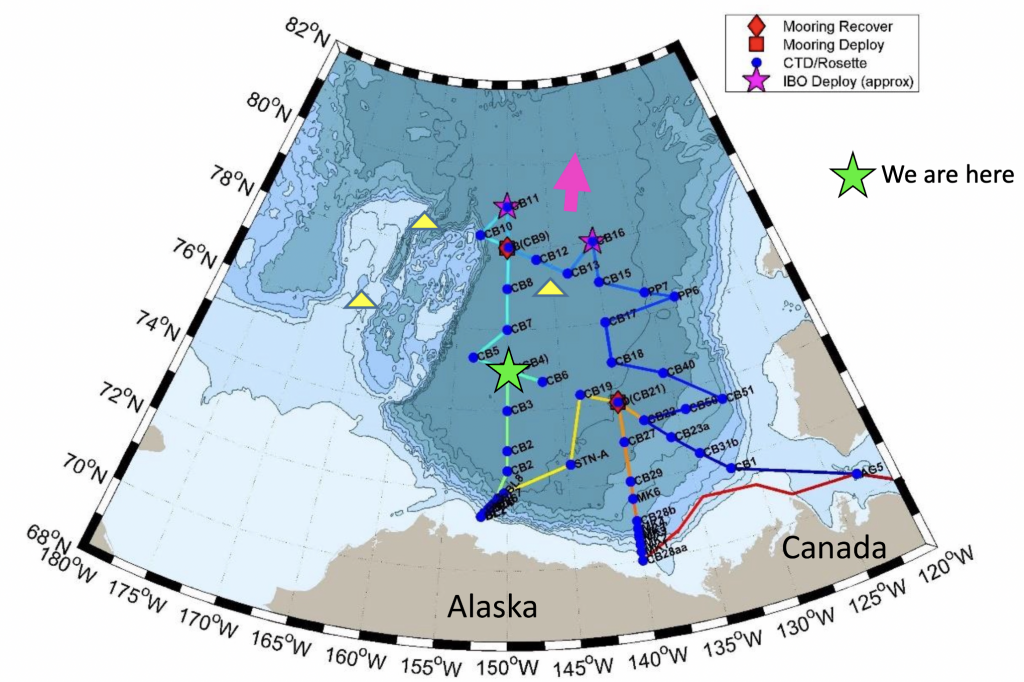Dispatch 18: Redeployment of Mooring A
Ashley Arroyo
October 2, 2023
Dispatch 18: Redeployment of Mooring A
Two days ago (on September 30th), we recovered BGOS Mooring A (at 75°N 150°W). Once a mooring is recovered, we would typically steam to another science station to do a CTD/rosette cast, and then return to the mooring site 24 hours later for its redeployment. The time in between the recovery and the re-deployment gives the WHOI team a chance to reprogram the mooring instruments to ensure they are ready to be sent back down to measure data for the next year. However, the day after the mooring recovery, sea conditions were extremely rough at the Mooring A site. The BGOS moorings are deployed by lowering the anchor down first, followed by the instruments and the top float, so there is an extremely heavy load hanging over the side of the ship for several hours. Because of the rough seas with large swells (2.5-3.5 meters tall!), the conditions were not ideal for a mooring redeployment. So, after recovering the mooring, the science team planned to steam to an extra CTD/rosette station, to give an extra day in between the mooring recovery and its redeployment while we waited for conditions to calm. We arrived back at the mooring site late last night. By the time the mooring operations began this morning, the weather and sea conditions were more favorable for the deployment.
The mooring redeployment, which is essentially the same process as its recovery in reverse (see dispatch 13), began around 10am. The mooring is lowered into the water in the following order: the 2500-pound weight, bottom pressure recorder, and releases, followed by a series of small flotation spheres, the instruments (which are distributed across various depths on the wire), and lastly the yellow surface buoy which also has instruments mounted on it (see the mooring schematic in photo 5) . The mooring crew released the mooring from the ship just as a snowy squall rolled in!
While the deployment was taking place, one of the ice specialists spotted a large iceberg (the technical term is “tabular ice”) just a few nautical miles away, and suggested the ship take a closer look after the mooring was deployed. So, we did, and it was an incredible sight! The iceberg is an ice chunk that had broken off a land glacier in the Canadian Archipelago (estimated to be thousands of years old ice from Ellesmere Island) in 2020. It is now doing its rounds in the Canada Basin. Now, we are traveling south to continue CTD/rosette casts!
